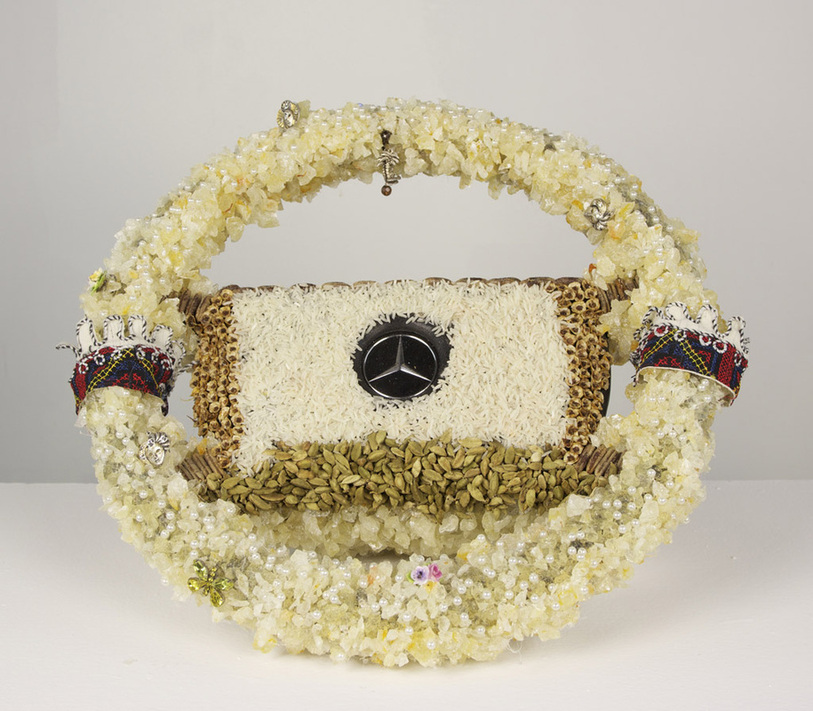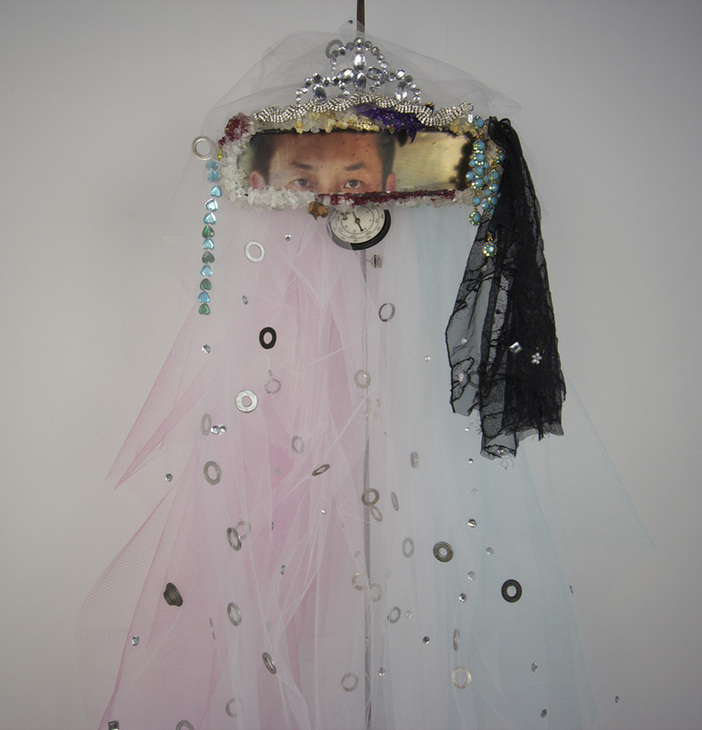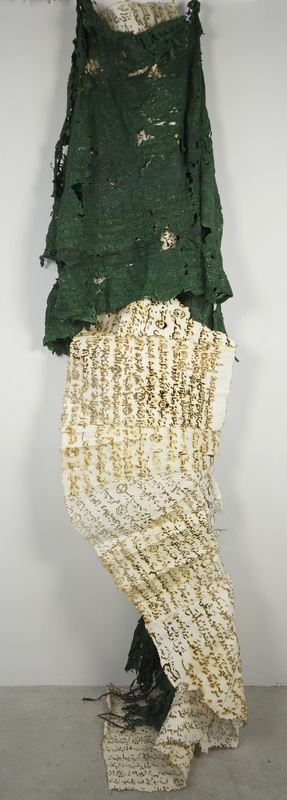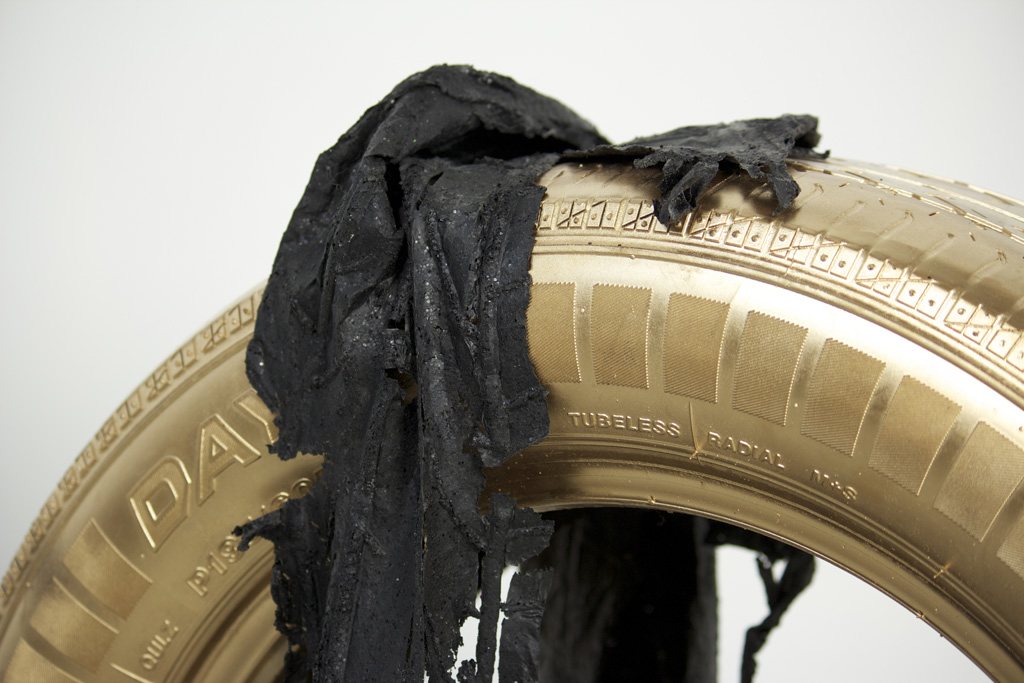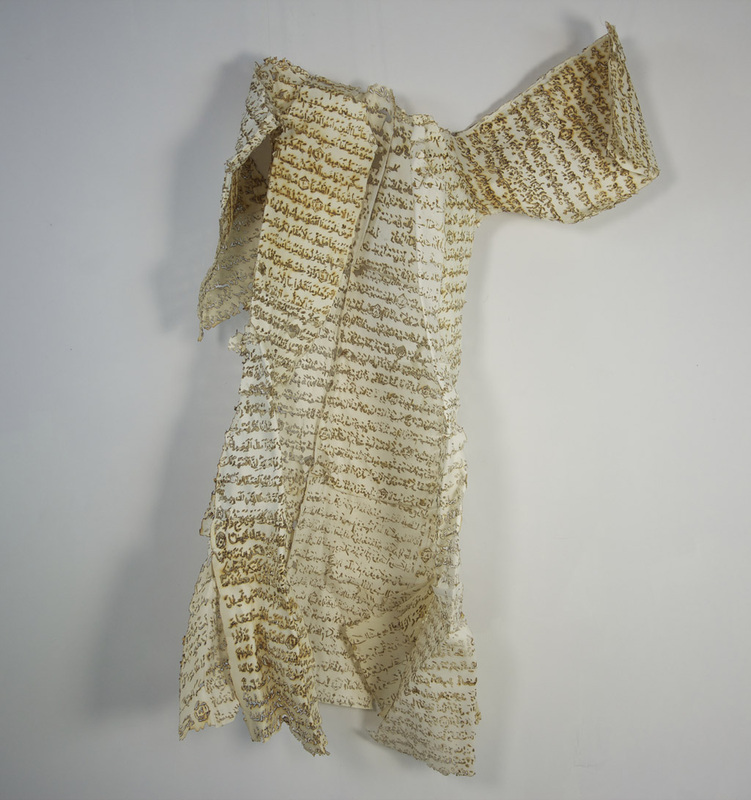PORTFOLIO: SOLAFA RAWAS
|
DESCRIPTION OF BORE N. 1
I began collecting automobile parts in the summer of 2011 while visiting my family in Saudi Arabia. My idea was to gather what might be regarded as the essential pieces found in the car: the items required to control the automobile. These parts also happen to be the most intimately ‘personal’ elements. The steering wheel, the rearview mirror, the car keys, and pedals all represent power (control) but they also represent an extension of the self-a self—a physical expression of our voice, our impulses, and our place in the world.
I started to explore the domestic lives of Saudi women. My interest inhabits how their lives are shaped by socio-economic realities and political ideologies. Again, because the movements of Saudi women are severely restricted, they must endure what I call forced boredom. The steering wheel in this piece I found in Jeddah, Saudi Arabia. Use of the Mercedes brand illuminates an important aspect of the Saudi community: social class. Every woman, no matter what her status in society, is subjected to the same reality. By adorning the surface of the wheel with saleg arabi, a staple meal prepared by Saudi housewives, I imbue it with the persona of one who would never normally touch a steering wheel. The idea of domesticating ‘forbidden’ objects was inspired by witnessing my sister’s tendency to alleviate her own boredom by embellishing the furniture’s at my parent’s home with household items. |
|
DESCRIPTION OF BORE N. 2
The review mirror is from the assortment of car parts I collected while I was in Jeddah. I instructed my sister, who lives in Jeddah, to take pictures of her Indonesian driver at moments when he glanced at her in the review mirror. I then printed one of the images onto transparency paper and positioned it on the review mirror.
I ‘domesticated’ the review mirror by decorating its surface with materials familiar to Saudi housewives. The adornments include the veil that she is required to wear when she goes outside of her home. After her male guardian, her foreign driver is the most significant male figure in a Saudi woman’s life. He not only takes her everywhere, he also listens to her conversations with family and friends in the car. In reality, her driver is the man who knows her most intimately. There is an inside joke among Saudi women about marrying their drivers. This joke was the inspiration for this piece. |
|
DESCRIPTION OF UNTITLED
Two green carpets were made by casting a car tire with rubber mixed with paint and sparkles.
The portion of the sculpture conveying text is made from newsprint paper. Arabic versus from the Holy Quran that reference women (surat alnesa’a) are burned into the newsprint. The sculpture is a study in contrasts: hardness and softness, roughness and smoothness, organized geometry and free flow of form, toughness and vulnerability, nature and industry – and ultimately, masculinity and femininity. |
|
DESCRIPTION OF UNTITLED
This sculpture is comprised of a car tire sprayed in gold and covered with a black cloth. The black cloth is a cast of a car tire that was made using a mixture of rubber, paint, and sparkles. It mimics the veil Saudi women wear when they go out in public.
The two objects together invite questions about the function of each object and their relationship to one another. And they engage us to ponder the place of each in art and life. |
|
DESCRIPTION OF UNTITLED
Using heat, I transferred a collage of Quran versus about women (surat alnsa’a) onto newsprint paper. I then sewed the paper into the uniform women are required to wear when they leave their homes.
|
|
Solafa Rawas is a London, Ontario based sculptor. She recently graduated from Western University with a BFA and in the fall will pursue her MFA at Concordia University, Montréal. Rawas lived most of her life in Saudi Arabia, which had tremendous impact on her artistic career. |
